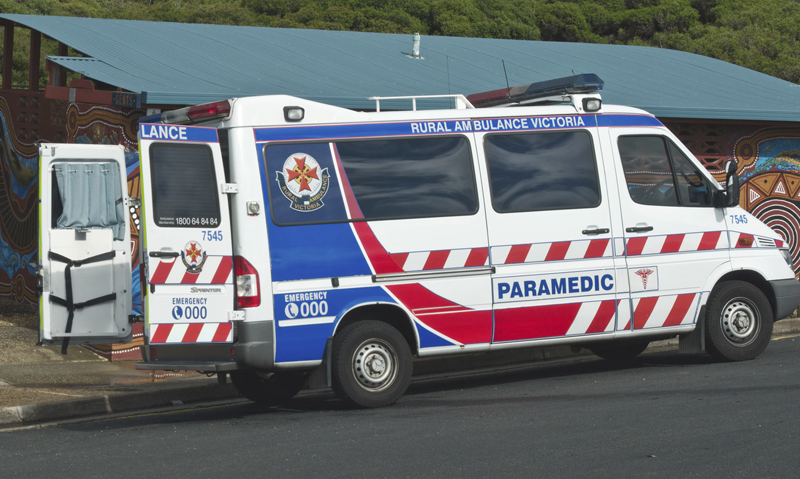AUSTRALIAN paramedics are seven times more likely to be seriously injured in the course of their job than the national average, and are five times more likely to die, according to a leading expert.
Professor Brian Maguire, from Central Queensland University’s school of medical and applied sciences, was lead author on research published in the MJA, which also found that paramedics were twice as likely to be injured on the job as police officers. (1)
Professor Maguire told MJA InSight he hoped the research would cause “uproar”.
“There is a significant problem here”, he said. “That’s why this research is so important.
“There has been anecdotal evidence for a long time about the injury rates but there has been no analysis of the effects of [mitigating] interventions.”
The retrospective study examined data from Safe Work Australia (SWA) on workers compensation claims by injured paramedics between 2000 and 2010, finding the average rate of reported injury was 80 serious cases per 1000 paramedics per year.
The researchers found that during 2008–2009, the rate of serious injury among paramedics was 94.6 per 1000 compared with the national average among all occupations in Australia of 13.0 per 1000. In the same period, a report from SWA indicated that the groups with the highest injury rates were skilled agricultural workers (82.9/1000), police officers (42.7/1000), road and rail transport drivers (33.1/1000), enrolled nurses (25.8/1000), and health carers and aides (20.0/1000). (2)
The most common paramedic injuries were muscular stress, followed by falls, vehicle accidents and violence such as assault or bullying.
The rate of fatalities for paramedics was 9.3 per 100 000 per year (eight in the 10-year study period), compared with the national average of 1.6, a relative risk of 5.8 (95% CI, 2.9-11.6).
The researchers wrote that the research demonstrated that “the paramedic profession is one of the most dangerous occupations in Australia”.
“The challenge is that there is no shortage of ideas [on how to make the paramedic’s job safer]”, Professor Maguire told MJA InSight. “But they are all at the level of granny’s home remedies — they may be good ideas, but there is no evidence about the results of those interventions.”
Mr Ian Patrick, president of Paramedics Australasia, the national organisation representing paramedics, said the research provided much needed documentation of the problem.
“We have an opportunity now to look at the issues and hopefully this will lead to some collaboration and pooling of data so some action can be taken”, he told MJA InSight.
“There have been some incredible, fantastic improvements in both technology and education for paramedics, but the fact is paramedics are the kind of people who just want to try to do a good job.
“They have a clinical imperative to do what’s best for the patient, and sometimes that’s not always what’s best for the paramedic.”
The makeup of the workforce had also changed significantly, he said. “Thirty years ago most paramedics were big muscly blokes from a trade background. Now over 50% are university educated and female.
“And even though we’ve had these significant and fantastic improvements in vehicles, equipment, education and psychological support, it’s inherently a dangerous job and we still have this rise in the injury rates.”
Professor Maguire said his research team hoped to get NHMRC funding for a project to bring together data from all of Australia’s ambulance services.
“If all goes well we’ll be under way by the end of the year”, he said. The 3-year project would involve interviewing paramedics who had been injured in the course of their job, including details of circumstances, with a view to coming up with specific action plans.”
Mr Patrick said any information would be welcome.
“Given that the top two causes of injuries (muscular stress while lifting, carrying, or putting down objects and muscular stress while handling objects other than lifting, carrying or putting down) make up 60% of the total — if we can knock off those top two, that’s going to have a tremendous impact on the lives of paramedics”, he said.
1. MJA 2014; 200: 477-480
2. Safe Work Australia: Compendium of workers compensation statistics Australia 2010–11

 more_vert
more_vert